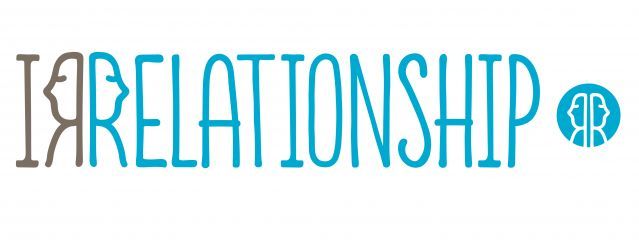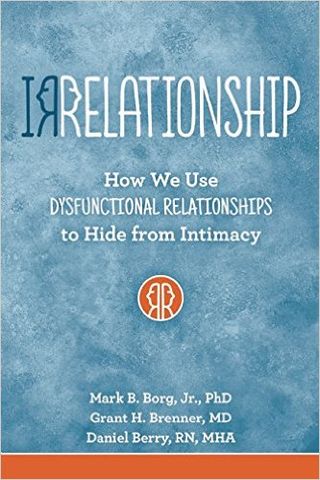Relationships
Working and Living Through What Irrelationship Represses
(Ir-)Repression Case Study—Jeong & David (Part 2 of 2)
Posted December 15, 2015

“They say that ghosts find it painful to haunt the living”—Michael Chabon, The Amazing Adventures of Kavalier & Clay
Jeong’s ambivalence about spending time with David took several years to resolve. From the beginning of their reconnection, Jeong resisted meeting David even for coffee. And after they did meet, Jeong would reprise his disappearing act from nine years earlier, i.e., when he announced he was getting married. Curiously, the more directly Jeong expressed his emotional attachment for David, the longer the duration of his subsequent disappearance. There was a clear relationship between the intensity of the intimate experience, and the subsequent degree of protective withdrawal—the form the withdrawal took, though, was all Jeong.
The breakthrough came when Jeong’s longstanding dream of starting his own web design business came about. Unbeknownst to David, as the economy improved after the recession of 2008, Jeong had moved on his plan. Suddenly, one morning in September of twenty-twelve, David received a text message: a graphic of the logo of Jeong’s new web design company, followed by a photo of the signed contract with his first customer. This was followed by another text message:
“I owe this to you. Your love saved my life.”
A moment later, David’s phone rang. Jeong’s voice repeated, “Your love saved my life.” He then added, “You have to know how sorry I am for the long time Jeong sucked. Thank you that you stayed next to me. I know you are always next to me.” Jeong’s ambivalence did not entirely vanish that day, but from that day he was noticeably more responsive to David’s phone calls and text messages.
At about the same time as this breakthrough, David started a demanding new job that resulted in their having less time together than during the period of Jeong’s disappearances. But commitment to their connection became increasingly firm. David’s heart was broken by Jeong’s accounts of how badly he missed David during the darkest periods of his marriage. He also became increasingly in touch with the unchanged place Jeong occupied in his heart during the decade of separation.
David once remarked in therapy, “What really surprised me was Jeong’s telling me that had always loved me—even during the silent years when he was hating himself so much, and despite what a brat I was when we first met—and still can be. And—I won’t lie—he still has days that he ‘disappears,’ when he won’t talk, won’t discuss what’s going on with him, what he’s worried about, or when the vulnerability of being close to me feels like more than he can handle. But he always comes back. And every time, I hear greater commitment in his voice. The fact is, we’ve learned that being in love doesn’t have anything to do with how we act on any particular day, or even what we do or don’t like about each other.”
Jeong and David’s love for one another actually grew during the silent years. But it took more than a decade for them to be up to the task of learning both to give and to receive unconditionally.
The DREAM Sequence
Jeong and David’s path to recovery followed the Irrelationship DREAM Sequence, which teaches couples and others techniques for leaving the self-imposed isolation that prevents discovery of the excitement of shared intimacy.
Discovery: David and Jeong’s “hitting bottom” dates from Jeong’s cancellation of their relationship when he got married. But regardless of Jeong’s choices at that time, David remained unprepared to accept more from other men than their being added to his trophy case. Meeting Jeong again neutralized his equivocation around intimacy almost immediately—though he tried for some weeks to convince himself otherwise.
Jeong could no longer avoid the destructive implications of undertaking a heterosexual marriage to prevent the discovery that he was gay. (He had a heart attack two years into his marriage.) In different ways both men had chosen safety from the frightening parts of true intimacy.
Repair: When David and Jeong met in 1999, David had little insight into the adolescent aspects of his behavior. By the time they reconnected, years of therapy had changed David’s perspective enough to make him able to appreciate the smallness of the world he lived in and the rare opportunity he had been given when he and Jeong reconnected.
For Jeong, leaving his marriage was the first step in leaving the trap of his fears, although anxiety about how this could affect his children made him skittish about opening himself to David. Also, meeting David’s friends added to his anxiety since he had never been known socially as a gay man. But the first bracing rush of their embracing warmth allowed Jeong to imagine a future he had never even fantasized for himself.
Empowerment. Jeong’s owning his poor treatment of David, and David’s admission of his fear of closeness stoked belief in the possibility of a life together that they increasingly realized could not control any more than they could control one another. Jeong sometimes teased David about the improbable circumstances (“freaking fate”) that seemed inevitably to have brought them back to one another.
Alternatives: Revisiting the past set the stage for real conversations about intimacy. Jeong became able to admit that he did not envision life without David. At the same time, he practiced sharing his anxiety about his children rather than letting this complicated issue become a wedge in their relationship. Disclosing fears became as important as their enjoyment of one another.
Mutuality: Though not able to live together, sharing financial resources has become an important marker of intimacy for them. They see this as a vital ingredient in the flow of their joy in one another.
In therapy one day, David summed it up: “We rarely even try to guess what kind of life lies ahead. Though we’re unable to live together at this time, the deepening of our sharing is so exciting that I feel silly even trying to fantasize about the future—not that it matters. The joy of sharing ‘whatever it is’ each day has become everything.”
Visit our website: http://www.irrelationship.com
Follow us on twitter: @irrelation
Like us on Facebook: www.fb.com/theirrelationshipgroup
Read our Psychology Today blog: http://www.psychologytoday.com/blog/irrelationship
Add us to your RSS feed: http://www.psychologytoday.com/blog/irrelationship/feed

The Irrelationship Blog Post ("Our Blog Post") is not intended to be a substitute for professional advice. We will not be liable for any loss or damage caused by your reliance on information obtained through Our Blog Post. Please seek the advice of professionals, as appropriate, regarding the evaluation of any specific information, opinion, advice or other content. We are not responsible and will not be held liable for third party comments on Our Blog Post. Any user comment on Our Blog Post that in our sole discretion restricts or inhibits any other user from using or enjoying Our Blog Post is prohibited and may be reported to Sussex Publisher/Psychology Today.
To order our book, click here





